Cuba is vibrant, beautiful and unlike any other place you’ll travel. In this guide, we’ve pulled together our tips, take-outs and important things to know if you’re planning a trip to Cuba.
Arriving in Cuba feels like stepping out of a time machine into a different age. In Havana, flaming red Fairlanes and cobalt blue Chevrolets, all polished paintwork and shiny chrome, glide past crumbling sea-side mansions. There’s a hint of rumba in the air. People gather on the stoops of their multi-hued homes, chatting to neighbours and watching kids play in the street. The energy is tangible.
Cuba’s tumultuous journey through colonialism, revolution, the fall of the Soviet Union, and crippling ongoing sanctions have shaped its people, culture and identity. It’s a nation in a constant state of challenge and change.
What the future will bring for the country remains to be seen. 2024 brings with it fuel shortages, supply issues and a vital tourism industry that is still struggling to find its way back post-pandemic. Yet despite years of hardship, this is one of the most vivid and lively places we’ve ever visited. A destination we will never forget and one we hope to return to.
There are lots of things to know before going to Cuba. It really is unlike just about any other place you’ll visit.
In this post, we’ve gathered together some of the most important stuff, as well as our learnings, take-outs and top travel tips – checked and updated for 2024 – to help you go about planning a trip to Cuba.
The bottom line is, though, things are ever-changing. Plan what you can, but expect the unexpected and be ready for it. Is Cuba worth visiting? Absolutely.
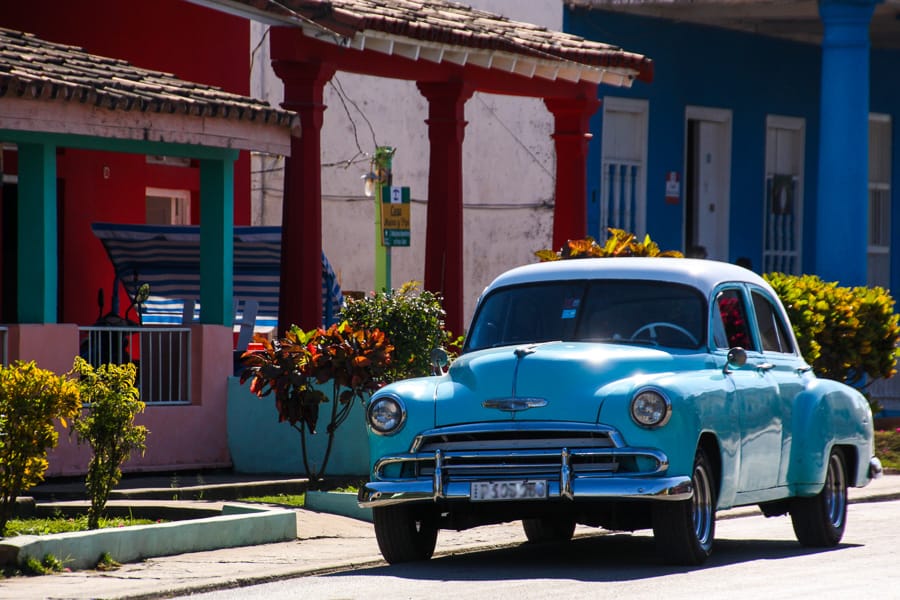
Planning A Trip To Cuba Snapshot
Country: Republic of Cuba
Capital: Havana
Official language: Spanish
Population: appx. 11.17 million people
Official currency: Cuban Peso (CUP)
Travel adaptor: Type A but bring a multi-country adaptor that also has Type C. Voltage is typically 110V and 220V in some hotels.
What’s in this post?
Best time to visit Cuba
Cuba visa requirements
Managing money in Cuba
Internet in Cuba
Transport and travel in Cuba
Accommodation in Cuba
Eating in Cuba
Arranging tours and activities in Cuba
Health and safety in Cuba
How to go about planning a trip to Cuba
Best time to visit Cuba
Hugging the Caribbean Sea to the south, Cuba serves up exactly the kind of balmy weather you’d expect of an island in the tropics.
Cuba’s dry season generally falls between November and April, bringing with it long, warm sunny days. This is the best season to visit, and when most people do, particularly over December to March. April and October are the shoulder months.
May to October marks the rainy season but again, this is the tropics so you’ll still have sun and warmth, just interspersed with short, heavy dumps of rain. Heat and humidity peaks in July and August, which is when the locals holiday.
It’s also worth noting that June to November is hurricane season, something to keep close tabs on if you’re planning to visit Cuba during this time.
We travelled around Cuba in late January and early February. It was warm and humid during the day with lots of sunshine and just one blast of stormy, wet weather while we were in Cienfuegos.
We certainly found it busy with tourists in the historic centres of the cities we visited, but as we quickly found, you don’t have to walk far from these hot spots to find ‘local’ Cuba.
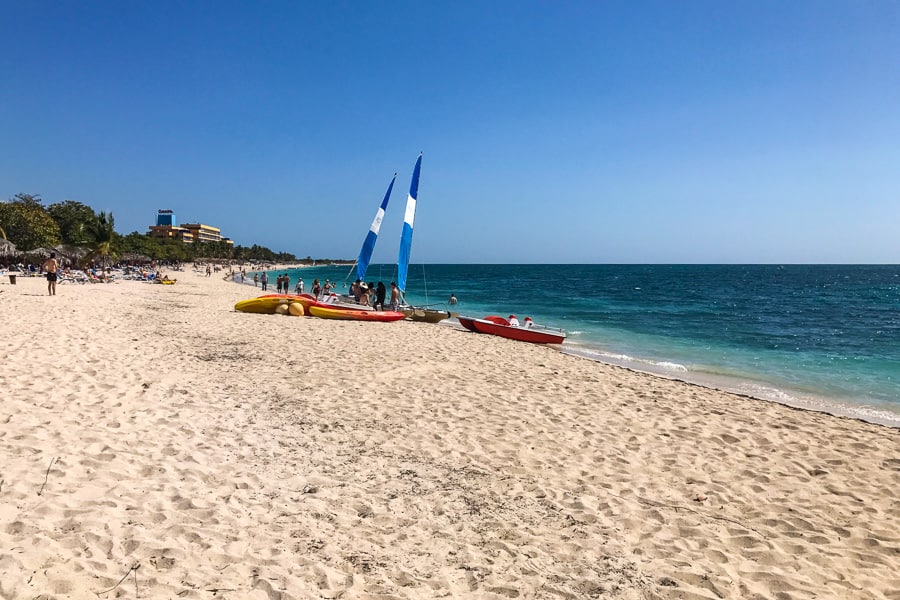
Cuba visa requirements
One of the first things you should do once you’ve decided to travel to Cuba is head to your home government’s travel advisory website for specific information on the requirements and documents you’ll need for Cuba.
This will vary depending on your passport, the reason for your Cuba visit, as well as where you’ll be coming into the island from and going to after your visit.
All tourists visiting Cuba will need:
- a passport with at least six months’ validity
- a Cuba Tourist Card (see below)
- comprehensive travel insurance.
You will also need to complete the D’Viajeros Travel Form online in the 48 hours before you travel to Cuba, then print a copy or save it digitally so you can present it when checking in for your flight to the country.
Tourist cards and visas
Most travellers to Cuba will need what’s called a Tarjeta de Turista, a Tourist Card which includes a visa. You need to arrange it before you travel to Cuba and it gives you up to 90 days in the country. One extension for an additional 90 days is available once you’re in Cuba. There are two kinds of Tourist Card – green and pink.
- You will need a Green Tourist Card if you are travelling to Cuba from any country except the USA.
- You will need a Pink Tourist Card if you are travelling to Cuba directly from or via the USA, regardless of your nationality.
Tourist cards can be purchased through airlines, travel agents and Cuban embassies and consulates. You can also arrange it in advance and have it delivered via websites such as Visa Cuba.
From our base in London, we downloaded and prepared the documentation we needed from the Cuban Embassy website, then visited their visa office in the city. We needed to have proof of our arrival and departure from Cuba, and booking confirmation for our first night in Cuba in order to get the tourist card. While this was a relatively straightforward process, with hindsight, we would definitely do it online and save ourselves the time and hassle.
Travel tip: There is a list of eligible nationalities for the Cuba Tourist Card. Some nationalities are exempt from needing a tourist card or a visa, while others are not eligible for a tourist card and must apply for a visa through their nearest embassy or consulate. More information can be found here but things change so be sure to confirm the specific visa requirements for you.
Other important things to note in relation to USA/Cuba travel
Cuba General License
If you are a US citizen, resident in the USA, or you are another nationality and are planning to travel to Cuba directly from or via the USA, it’s important to be aware that US regulations do not allow travel to Cuba for tourism purposes. It doesn’t mean you can’t visit, it just means that – whatever your nationality – you must comply with US regulations and travel to Cuba under one of 12 permitted categories.
This is called the Cuba General License and if it applies (or will apply) to you, we encourage you to look into it in detail so you are clear on the requirements before you travel.
US ESTA Visa Waiver Program
It’s also worth noting that anyone who has visited Cuba since January 2021 is not eligible to enter the USA under its ESTA Visa Waiver Program. If you want to visit or transit the USA after visiting Cuba, you will need to apply for a US visa.
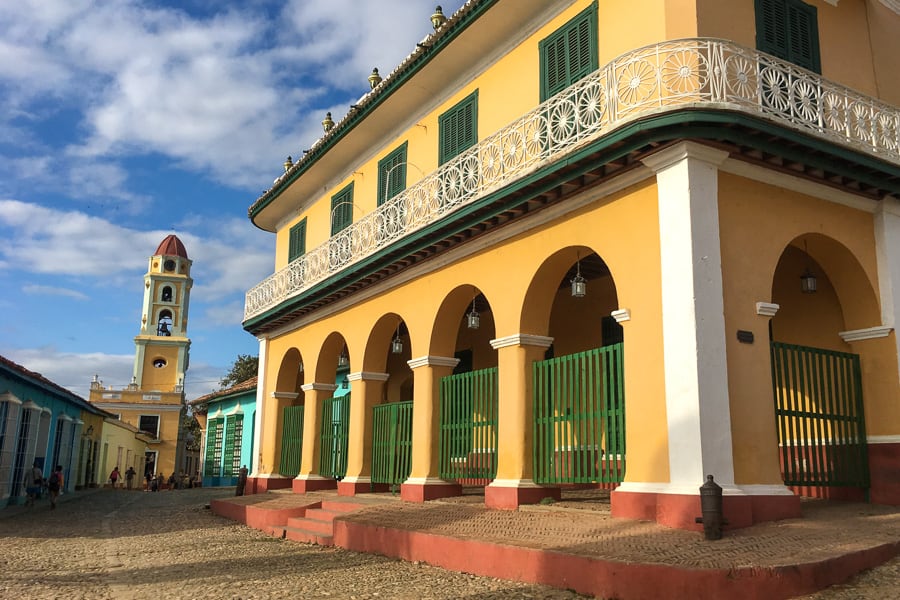
Managing money in Cuba
Do I need to carry cash? Can I get money from ATMs? Are cards accepted? And what’s the deal with the currency?
These are just some of the questions that dogged us during our own Cuba trip planning, and despite plenty of research, we were still unsure what to expect until we got there. Unsurprisingly, things have changed further since our visit.
Cuba money
Currency is a convoluted issue in Cuba and while we could try and unpack recent changes like the withdrawal of the Cuban Convertible Peso (CUC) and the introduction of the official digital currency, Moneda Libremente Convertible (MLC), the bottom line for tourists is that as of 2021, the Cuban Peso (CUP) is the sole legal currency.
That said, there is still a significant local demand for hard foreign currencies, in particular Euros (EUR) and US dollars (USD). In many places, while prices will be displayed in CUP, you will likely be able to pay cash in Euros or US dollars.
The official exchange rate of the Cuban Peso (CUP) is 25 CUP = 1 USD.
However, with the rise of the informal money exchange market offering far higher rates, the Cuban government reworked the rate in mid-2022 to 120 CUP = 1 USD. This is what you’ll get at the official exchange bureaus and banks. Just factor in a conversion fee of 8% for USD and 2% for other accepted currencies.
Cash, cards or ATMs?
Cash is still where it’s at in Cuba. Card payments and ATMs exist in some places, but are not yet so widely available (or reliable) that you could visit Cuba with your bank cards alone.
Also, bank cards issued by US institutions (and US-affiliated institutions) will not work. Check with your bank before you go whether your cards can be used, and bring enough cash to get you through, including an emergency stash just in case.
Euros and US dollars are the preferred foreign currencies and can be used in many local places, so it’s a good idea to bring these currencies in smaller denominations like 5, 10 and 20 notes.
When we visited Cuba, we brought about half of our planned Cuba budget with us as cash. We also carried a mix of both UK and Australian bank cards in the hope we’d be able to access cash along the way.
This was chancing it a bit but we searched out – and found – ATMs in Havana, Viñales, Cienfuegos and Trinidad. Fortunately, all of them worked. The exchange rate wasn’t great and ATM withdrawals incorporated what appeared to be a 3% commission on the transaction.
This was similar, however, to the commission charged by Cuba’s money exchange bureaus (called Cadecas). And while there were sometimes queues for the ATM, there were far longer queues at the Cadecas.
Still, we recommend that you don’t travel to Cuba expecting to rely on ATMs as even if you do find one, it could be broken, impacted by a power outage or simply out of cash.
Outside of the big hotels and resorts, credit cards are not widely accepted in Cuba, though you can apparently arrange cash advances on (non US-affiliated) Visa and MasterCards through the Cadecas. We didn’t try this though, and we only used our credit card to book and pay for accommodation online prior to our trip to Cuba.
Money exchange in Cuba
The official bureau for exchanging money in Cuba is called a Cadeca. You can change Euros, US dollars, British pounds, Canadian dollars, Mexican pesos and a small handful of other currencies for Cuban Pesos (CUP) at these currency exchange offices, as well as at most banks.
Check whether your currency can be exchanged before you travel, otherwise, arrange to bring accepted currencies with you. Aussies, our cash is useless in Cuba and can’t be exchanged, don’t bring it.
There used to be restrictions on exchanging US dollars for CUP. These restrictions have now been removed, but be aware there is an 8% commission fee for USD, which is much higher than the 2-3% for other currencies.
Our experience of changing money in a Cadeca was straightforward (though we did have to queue for a while), the exchange rate was reasonable and a 3% commission was charged.
You’ll need your passport for Cadeca transactions. Note as well that they usually close for a couple of hours each afternoon and queues are long when they’re open. Our tip: get there first thing.
There’s also plenty of information available online about exchanging money in Cuba informally on the black market. While we didn’t personally do this, apparently it’s quite common and the rates are still a fair bit higher.
Whatever you choose to do, aim to exchange only small amounts of your currency into CUP at any one time. You can’t exchange Cuban pesos outside of Cuba so best carry only what you need (you’ll get a feel for this as you go) and use it all up before you leave. If you need to change pesos back, do it before you go to Havana airport.
How much should I budget for my Cuba visit?
This will depend very much on your personal travel style and preferences.
We travelled independently as a couple, stayed in local casas particulares (see below for more about these), moved around the country by bus and shared taxi, joined some guided tours but also went self-guided a lot of the time, and ate street food and meals prepared by our casa hosts. We spent an average of around US$120 a day, but we’re conscious prices may be higher now with current fuel and supply shortages.
A good baseline would be to plan for at least US$100 per day, plus contingencies. Better yet, plan your itinerary in advance and from there build a budget factoring in the places you want to stay, transport, eating and drinking, and tours and experiences.
For a suggested guide on what to see and do in Cuba over 2 weeks, check out our itinerary for travel around the island’s western half, visiting Havana, Viñales, Playa Larga, Cienfuegos and Trinidad.
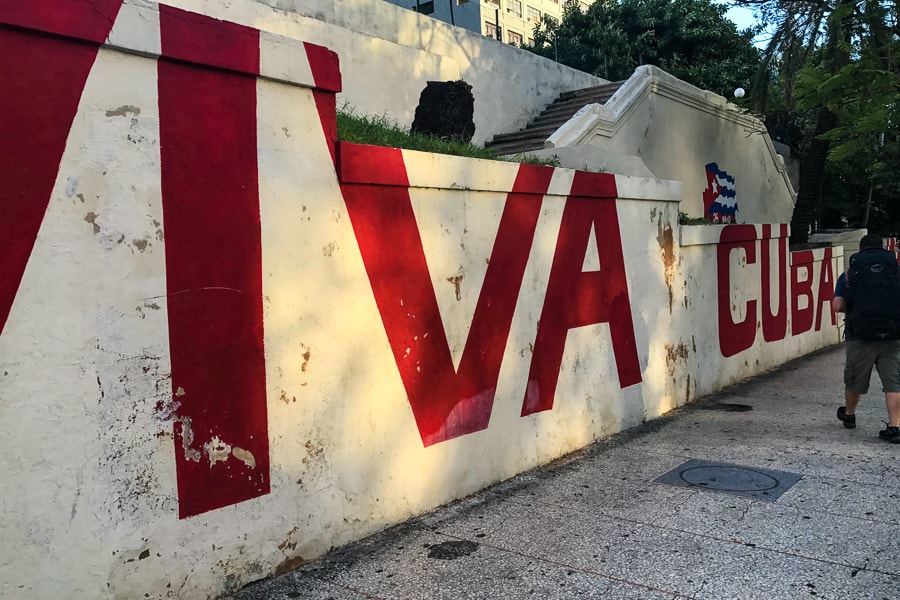
Internet in Cuba
We ended up having a bit of a digital detox for our trip, despite the fact that there is wifi in Cuba. It does exist and is (usually) accessible, but it’s not free, and it’s nothing like the wifi you might be used to. That said, we’re hearing it’s getting better all the time.
Essentially, Cuba’s national telecomms company, ETECSA, services wifi hotspots in various public parks and squares in cities and towns. You can find out where these public wifi spaces are at the ETECSA website.
You can ‘get online’ (based on our personal experience, we use the phrase loosely) by purchasing 1-hour or 5-hour, pin-activated Nauta wifi cards from official ETECSA stores in most towns (and at Havana airport). The 1-hour cards cost US$1 and 5-hour cards cost US$5. You need your passport to buy the cards. Expect long queues at ETECSA offices, so buy a couple if you can (there were limits of three at a time when we were buying them).
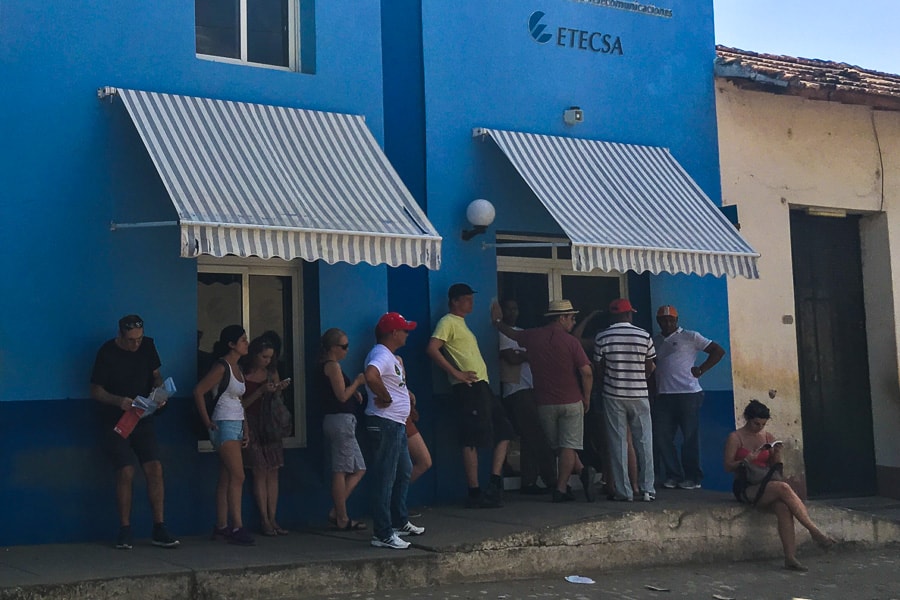
You can buy Nauta cards in some hotels as well but we’ve heard there can be a sizeable mark-up. Alternatively they may have their own wifi and require a different login card. Ask at reception before you try and access wifi in a hotel lobby.
People also sell Nauta cards for a mark-up on the street. If you’re hanging around a public wifi zone, you’re likely to be approached at some point by a wifi card hawker. We were offered 1-hour cards for around US$3 each. Pricey but worth it not to stand in a long queue if you’re just looking to jump online briefly. Just check before you buy that the scratch-off pin section on the back of the card is still intact so you know it hasn’t been used.
When we did manage to get online, the experience was usually hair-pullingly slow, with frequent dropouts and patchy access to some apps.
There are certain websites and apps you’re unlikely to be able to access at all, including US-affiliated online banking sites. To ensure you have access to the sites and apps you need, consider arranging a VPN as part of your Cuba trip planning. This is also an added layer of security while you’re on the public network.
We’ve read you can now use data roaming in Cuba with some international carriers. Check with yours before travelling to Cuba if you’re thinking about this.
There’s also a 30-day tourist SIM available through Cubacel. It costs around US$30 and can be pre-ordered and picked up at the airport on arrival. Unless you’re planning on spending more than 30 hours online though, it’s cheaper to go with the Nauta cards.
If it all just sounds like a hassle, go with the digital detox and enjoy being unplugged for a while.
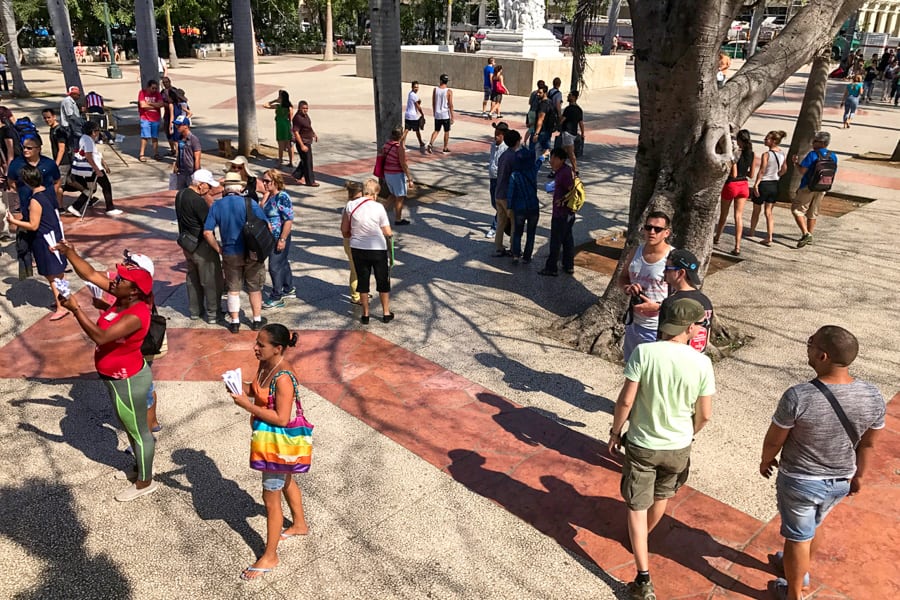
Transport and travel in Cuba
Cuba is a large island and distances can be deceptive. Our 2 week Cuba itinerary focuses purely on the island’s west, taking in Havana, Viñales, Playa Larga, Cienfuegos, Trinidad and back to Havana, and we were busy every day.
We considered car hire as it’s always our preferred option for getting off the beaten track and exploring at our own pace. However road signage is almost non-existent in Cuba, and hire and fuel costs add up.
In the end, we opted for public transport, using buses and shared taxis called collectivos.
Travel update: Cuba is currently experiencing a significant fuel shortage, which is impacting transport and other services. Hiring a car may be challenging as gas is difficult to come by. We’re also hearing that prices for private transport like taxis and collectivos have gone up quite a lot.
If you’re travelling to Cuba now or in the near future, have a plan, but also have contingencies, check ahead with people on the ground when you’re there, and be prepared for possible delays or lastminute service changes. We also encourage you to do as much research as possible about the current situation before travelling.
Intercity Buses
There are several bus companies in Cuba, but tourist bus services are primarily operated by the national bus company, Viazul, which has services between all the major cities, and travel company Cubanacan, which runs the Conectando intercity bus service.
Viazul has a website where you can search and buy tickets. We haven’t used this though and from what we’ve read, the site can be glitchy. Also, you cannot use the website to buy tickets once you’re in Cuba unless you have a VPN (which you would need to sort out before you arrive).
Once you’re in the country, you can buy Viazul tickets from their bus stations in each town. This is where their buses depart from and arrive into.
For our trips, we mainly used Conectando. While we found the prices were slightly higher than Viazul, Conectando picks up and drops off at major hotels, meaning you don’t have to navigate (or potentially taxi) your way to and from the Viazul bus station.
The best way to find out about Conectando’s services and timetables is to locate the Cubanacan office in each town, or find out which hotels are on the pick-up schedule and head there, as there’ll usually be a tourist desk where you can buy tickets. Your casa particulare host or hotel should be able to help you locate the nearest Cubanacan office or travel desk.
When we travelled, Transtur buses were being used to operate Cubanacan’s services. These were in good condition, with friendly, English-speaking hosts onboard keeping passengers informed about the journey and breaks along the way. Our long distance bus rides cost us between US$14-30 each.
Travel tip: Aim to organise your outbound bus ticket as soon as you arrive in each place. Cuba’s long-distance buses book up quickly and some services require you to book at least a day in advance.
Also, with current fuel shortages putting further pressure on public transport, your best bet is to make sure you know how you will be getting to your next destination as soon as you can. That way you can also look at arranging alternative transport if you need to.
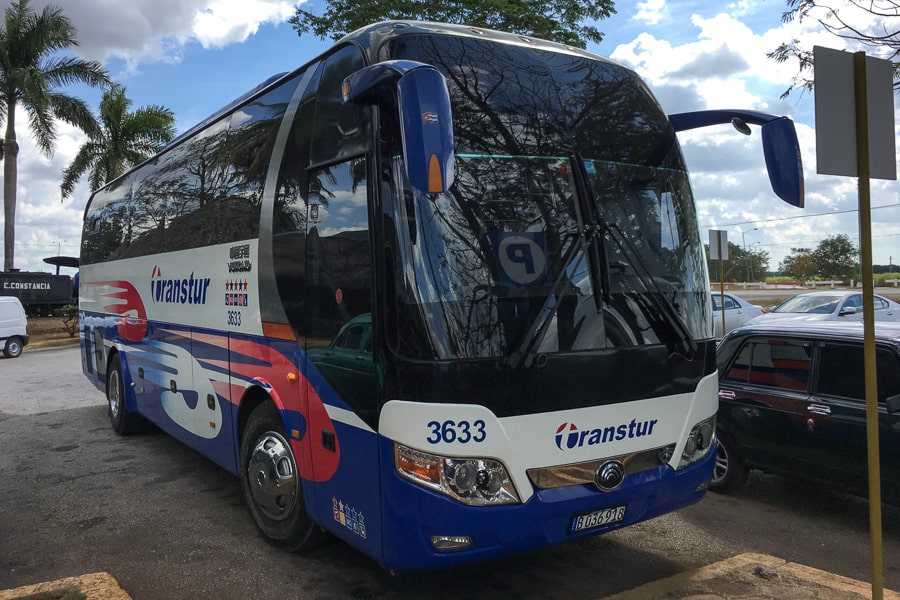
Collectivos (shared taxis)
Collectivos are shared taxis and no two collectivo journeys are alike. On one trip, we travelled 5 hours in a cramped, beaten-up old sedan. The next journey, we sprawled across the white leather backseat of a beautifully-restored vintage Chevrolet Bel Air.
We found collectivos a great option for intercity travel, with door to door pick-up, interesting fellow travellers to share the journey with, and prices competitive with the bus services (where both were available). Prices also varied depending on distance and could be negotiated.
Your casa particulare host will almost certainly know a collectivo driver that can take you on to your next destination for a pre-arranged price, although you can also organise them through the local Infotur office.
You may also be approached by collectivo drivers on the street, so if you feel like negotiating directly, go for it.
Just a further note that with current fuel shortages, we are reading that long distance taxis can be difficult to arrange right now, and the prices for private transport like collectivos is reflecting these local challenges. Be prepared for this if you are travelling in the near future.
While prices may well be significantly different right now, when we travelled, we paid around US$35 per person for our 5 hour collectivo trip from Viñales to Playa Larga (which involved two cars and a swap halfway), around US$15 per person for the 90 minute journey from Playa Larga to Cienfuegos, and around US$10 per person for the 90 minute stint from Cienfuegos to Trinidad (we had a full car of fellow travellers for that journey).
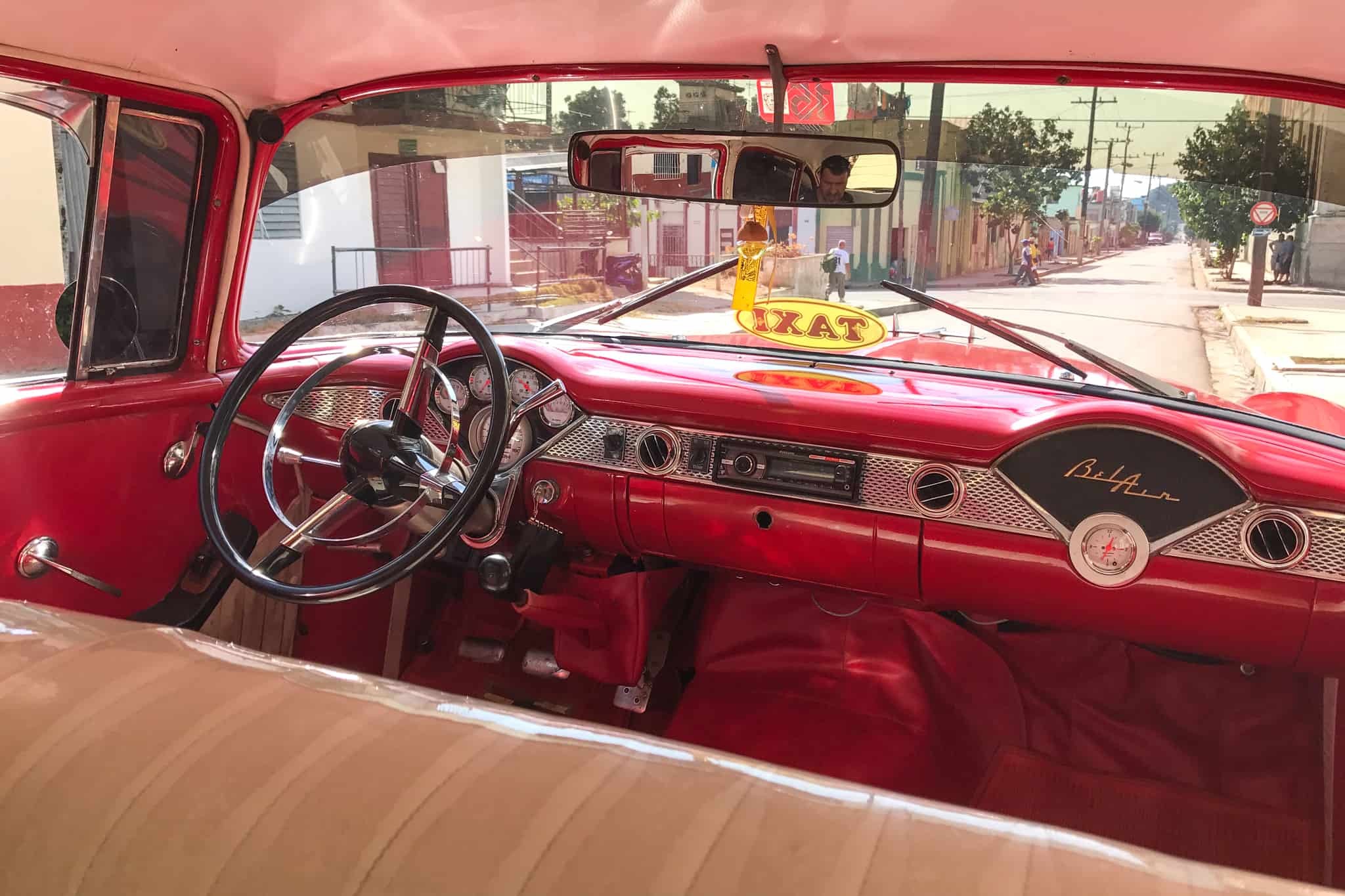
Travel to Playa Larga
As part of our 2 weeks in Cuba itinerary, we spent a couple of days in the lovely, low-key southern beachside town of Playa Larga on the Bay of Pigs.
We spent a good deal of time researching bus options from where we were in Viñales to the Bay of Pigs, as this wasn’t a scheduled service with Viazul or Cubanacan.
We learned that certain buses run from Viñales to Cienfuegos and Trinidad along the main road past Playa Larga and Playa Giron, and that you could ask the driver to stop along this road at each town and then find a way to get to your accommodation. It was almost impossible to have this confirmed by anyone in an official capacity however, and sounded too uncertain for us.
In the end, we opted for a collectivo, which cost around the same as the bus from Viñales to Cienfuegos. We travelled with some others who were going to Cienfuegos. En route, our collectivo pulled over and we met up with another taxi from Playa Larga, which took us the rest of the way.
From the sounds of things right now, it may be difficult to arrange collectivos to travel longer distances so if you’re keen to visit Playa Larga, we recommend looking into transport there before you go and confirm as soon as you arrive in Cuba.
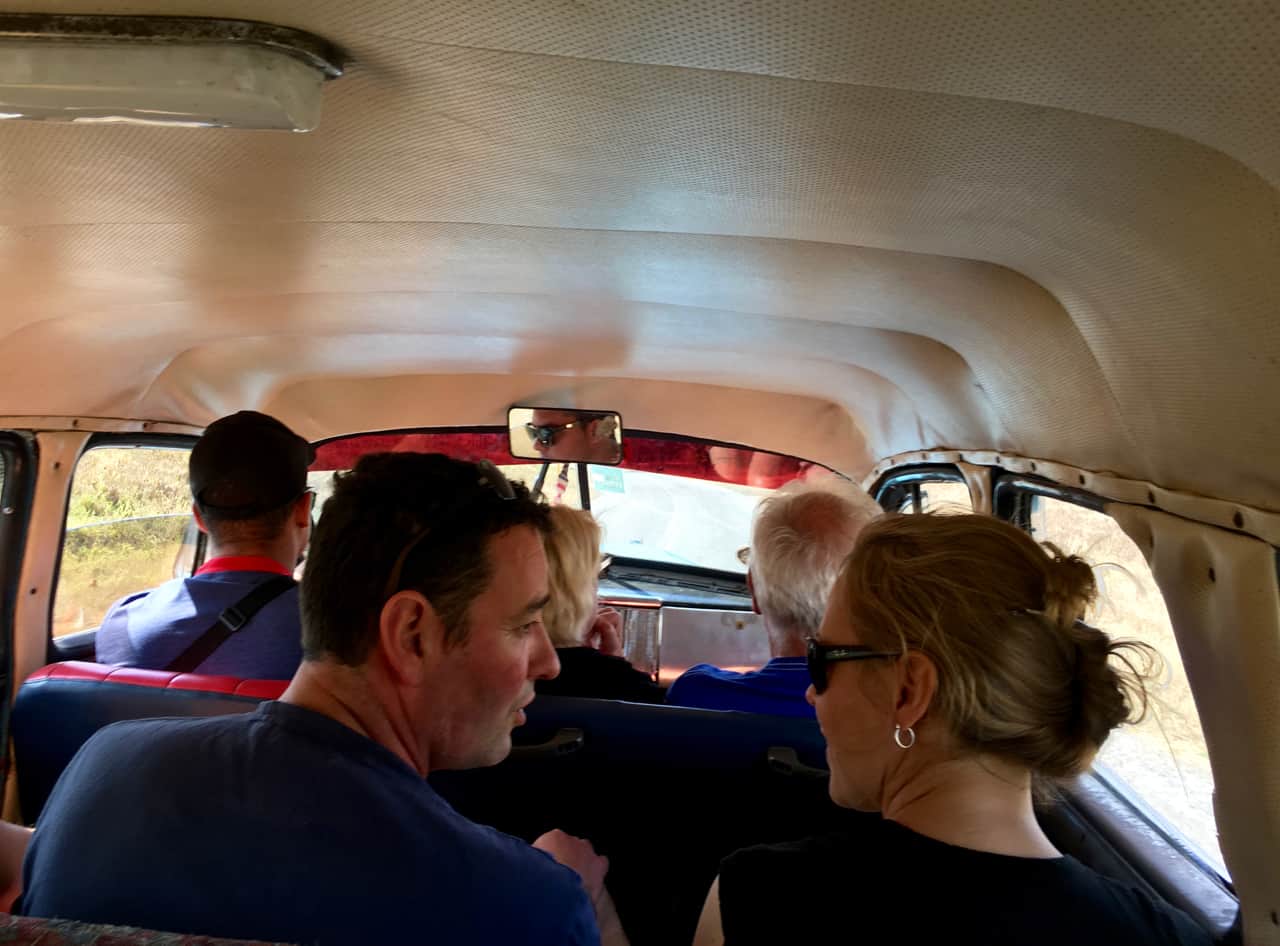
Private taxis
While we generally walked around the smaller towns we visited, we occasionally used taxis to get around the much larger city of Havana: a true test of negotiation skills.
We travelled across the city from the Old Town to our accommodation in Vedado for US$5 on one occasion, and US$10 another time. It all comes down to how much you feel like haggling on the day. Our transfers from and to Havana airport ranged from US$20-30.
You’ll also spot cute, round yellow rickshaws zipping about Havana and Trinidad. These little tuk-tuks are called Coco taxis and they’re generally cheaper than a regular taxi, though they’re best for short runs as they’re just about big enough for two people to squeeze onto the back seat.
We also organised taxis for half-day trips out of Cienfuegos and Trinidad, driving us to several places and waiting while we visited. We spent between US$35-50 for these taxi trips, and arranged them with other travellers where we could to share the costs.
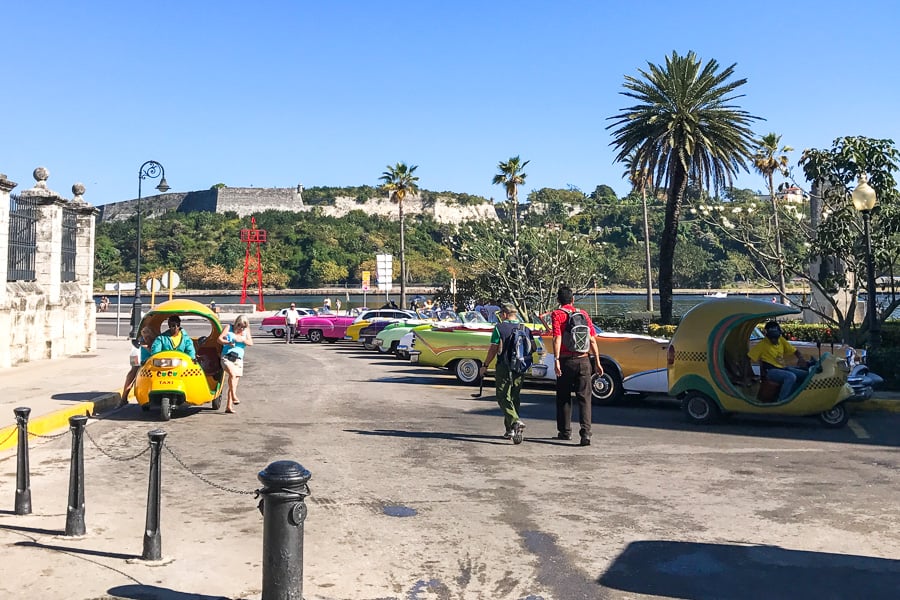
Accommodation in Cuba
The main options for accommodation in Cuba are state-owned hotel chains and hostales, international hotel chains, and casas particulares, which are essentially private homes that rent rooms to tourists.
Here’s a good overview on what to expect from the hotel chains and hostales.
We personally stayed in casas particulares, and for us, these were a highlight of our visit to Cuba. You get to meet and engage with Cuban families, enjoy their wonderful hospitality, and immerse in a more local experience.
There are some things to bear in mind if you are opting for this kind of accommodation in Cuba. First and foremost, they are not hotels, they are peoples’ homes.
In our experience, rooms were very clean, modest spaces, sometimes with retro or kitchy decor, beds of varying comfort, and a small space for storing luggage and clothes. Bathrooms were simple and functional, occasionally with hit-and-miss water pressure and heating. They usually had a social area, or rooftop space for meals and gathering with other guests.
Many casas particulares offer a hearty breakfast and some also offer home-cooked dinners. If you have the chance, we absolutely recommend enjoying at least one of these fabulous feasts.
We mostly found our casas through Tripadvisor and recommendations from other travellers, and booked them directly via email and Tripadvisor messages.
That said, it’s becoming far easier to search for and book Cuba accommodation online these days, with plenty of options now appearing on Expedia, Hotels.com, Hostelsclub.com, Airbnb and other sites.
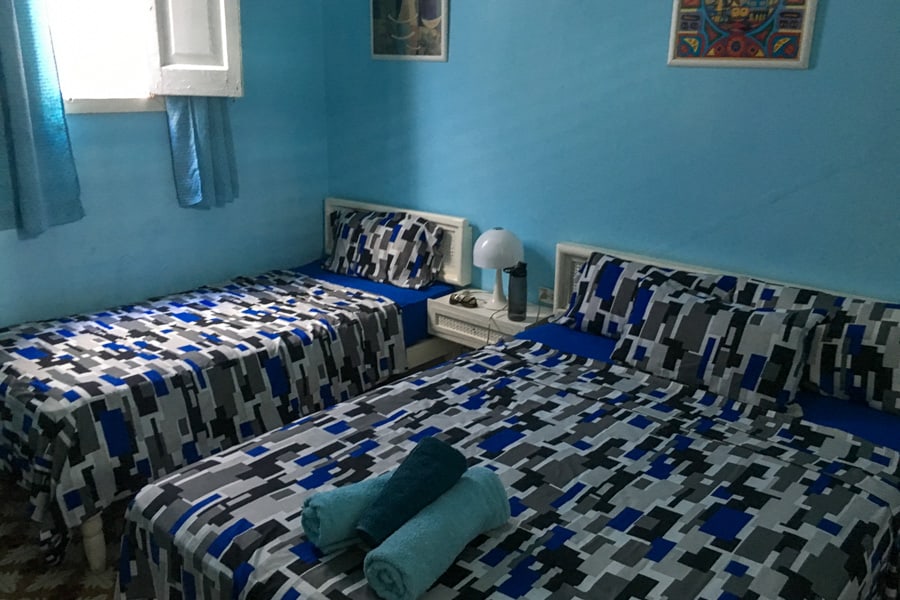
Once we knew our travel arrangements for a town, we reconfirmed our stay by phone or email so our hosts would know how and when we’d be getting to them.
Travel tip: Before you arrive in a place, confirm your casa particulare or hotel address with the accommodation, get directions, and let them know how and when you’ll be arriving (your casa hosts may come and meet you if you’re arriving by bus).
Be aware that buses are often met by touts who will try and encourage you to stay at accommodation where they’ll get a commission. If you mention where you’re booked, they may say your place is no longer open or they’ll offer to take you there but take you somewhere else instead. Have all the information you need to hand ahead of time, avoid saying where you’re staying, politely decline their offers, and go on your way.
One other thing to note is that casas particulares will sometimes take your booking but then arrange for you to stay at another casa particulare. This happened to us on more than one occasion and can be for a variety of reasons, such as limitations in the reservation process, overbooking or existing guests not checking out as planned.
While it can be initially disconcerting, this is Cuba, just go with the flow. We were never left in the lurch, and in each instance, we ended up in a nearby casa particulare of the same quality as the one we’d originally booked, with lovely hosts, and for the same price.
Generally, we paid around US$25-30 per night for a double room with private bathroom in casas particulares. Breakfasts and dinners were extra.
Most of our casa particulare hosts spoke some English (our one regret is not speaking better Spanish so we could get to know our hosts better), but even when they didn’t, we had no trouble working our way through the experience. Google Translate definitely helped, and in one case, our host brought in the English-speaking neighbour to help us chat.
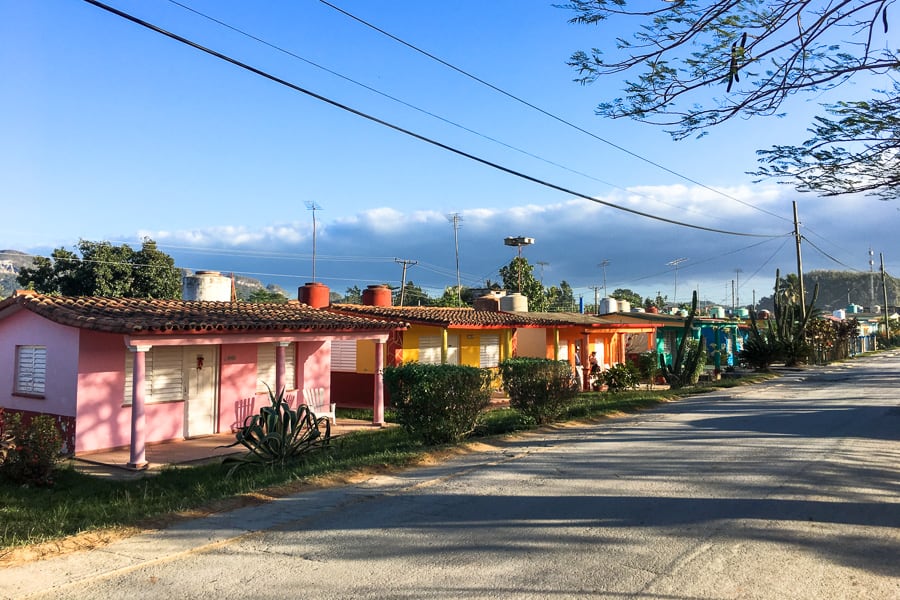
Eating in Cuba
We’d heard mixed reports about the food in Cuba, but we were pleasantly surprised. There are plenty of eating options in the big towns, though be aware that with food shortages in the country due to sanctions, a struggling economy, supply issues and a downturn in local production, you may often find menu items unavailable.
When it comes to dinner, we like to search out good local eating experiences. We didn’t eat at any high-end or hotel restaurants on our trip, but our meals ranged significantly in cost, from smart, mid-range joints where mains were around US$15-20 each, to small family-run restaurants where a simple and delicious meal of meat, rice and salad for two was under US$10.
Local draught beers and mojitos were usually around US$2-3 each, but always at least a couple dollars more in bars and areas with more tourists.
Cuba’s peso food stalls also offer an incredibly cheap way to snack, with pizza, tamales, popcorn and other fast foods on offer for small change.
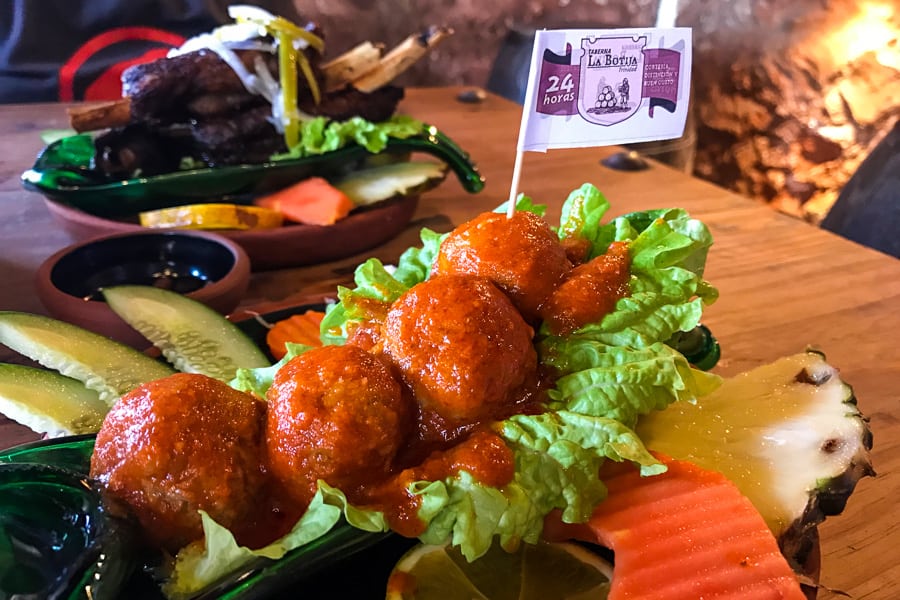
For us though, Cuba’s culinary showcase was truly on display in the local homes we stayed at: the casas particulares.
Throughout our trip, we ate perfectly cooked, fresh-from-the-sea fish, prawns, squid and lobster. In most instances, casa particulare meals included salad, vegetables, rice, a main of meat or fish, fruit, dessert and coffee. We usually paid around US$10-12 each.
For the most part, we also ate breakfast at the casas we stayed at. This was usually around US$5 each, and almost always consisted of fruit, breads, cheese, jams, eggs, sometimes crepes or pancakes, juice, coffee and tea.
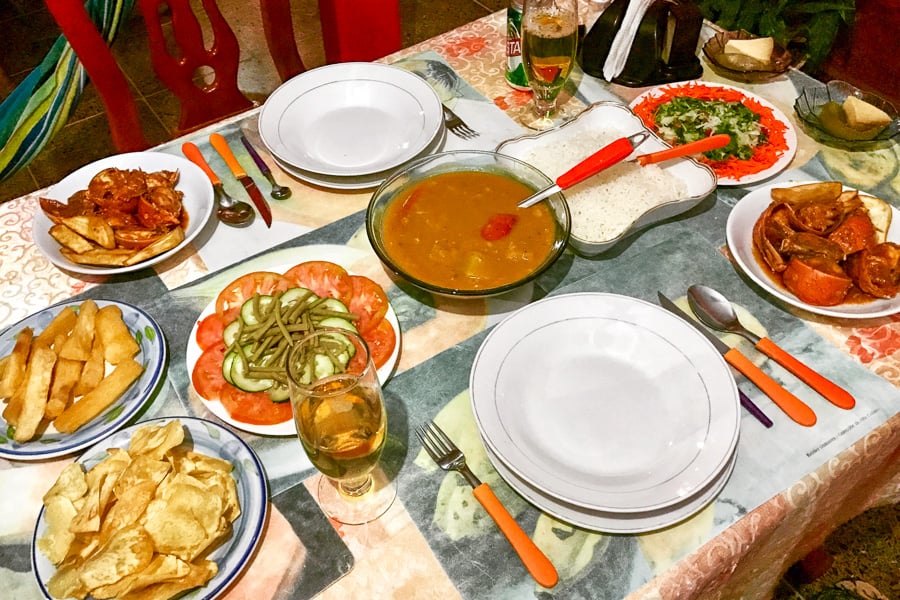
Arranging tours and activities in Cuba
We had a sense of the experiences and tours we wanted to do as we were planning a trip to Cuba, and we found it fairly easy to get things organised once on the ground.
As with transport, most casa particulare hosts will almost certainly be able to advise you on, and help you arrange local tours and trips. You can also book tours through the local Infotur office and travel agencies.
Travel tip: Infotur is Cuba’s national tourist information agency. They have offices in every town, where you can find information about local tours and excursions, getting around and more.
There is also a wide range of tours and activities that you can book online these days, from themed walking tours in the cities, to guided bicycle and horse riding tours in the countryside.
Overall, we were happy with our guided tours and excursions. However, if there’s something specific or specialised you have set your heart on, like bird watching or scuba diving, then we would recommend dealing directly with your researched and preferred provider if you can.
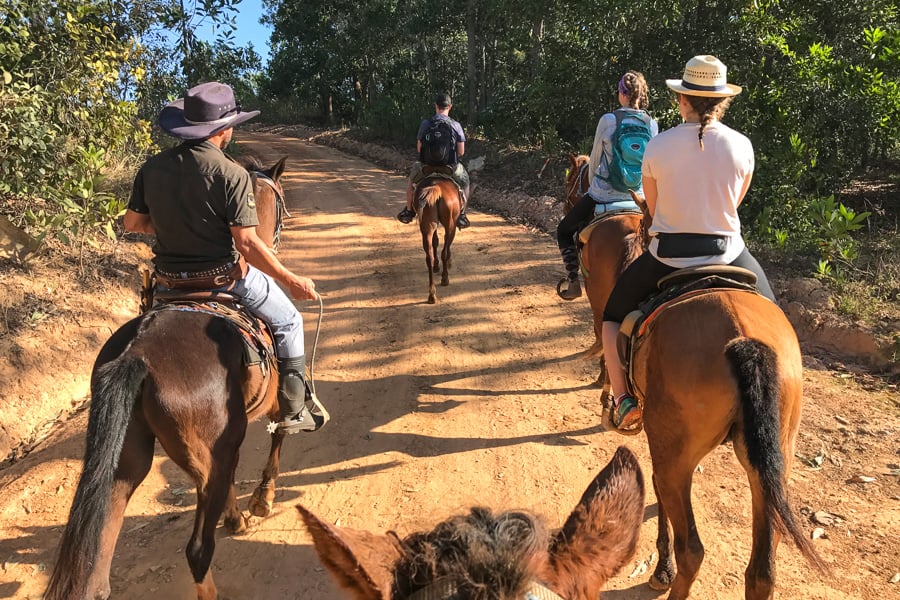
Health and safety in Cuba
Before our Cuba visit, the island was an unknown to us and we had the usual concerns about carrying cash and valuables. Once we were there, however, we felt perfectly fine. Cuba’s cities and towns are thrumming with people at all hours and there’s a genuine sense of community. Security guards and police were a common sight.
That said, you should always take precautions with your self and your valuables, especially in busy tourist areas, on transport and at night. Keep any cash and valuables in your room locked up if you’re out and about.
Check your home government’s travel advice for the latest updates on health and safety for travel in Cuba. Also give yourself plenty of time for any travel vaccinations you may need ahead of your visit.
Just a reminder as well that comprehensive travel insurance is mandatory for a Cuba visit, so arranging appropriate cover that is valid for the country is another essential tick-box in your Cuba trip planning.
If you’re planning a trip to Cuba and have questions, or if you’ve recently visited, drop us a message below! For more posts on visiting Cuba, including our 2 week itinerary, head on over to our Cuba page.

Thanks for this fantastic information. A great help with our planning. Visiting in March 2019 and already excited.
Hi Cherryl, really glad you found the post useful for planning your trip. We hope you enjoy Cuba as much as we did, and please feel free to contact us if you have any additional questions.
Super helpful! Particularly the money situation, the need to prepare for a digital detox, and getting about. So exciting!!
So glad you found it useful, Gill! Really excited for your upcoming trip and can’t wait to hear how things have changed in the months since we were there. Maybe it won’t be a digital detox after all (if all else fails though, the big hotels have wifi). Have a wonderful time!